In heart of U.S. corn belt,
new Syngenta Seeds R&D Innovation Center gives farmers a
“seat at the innovation table”
By Syngenta Group News Service
August 2023
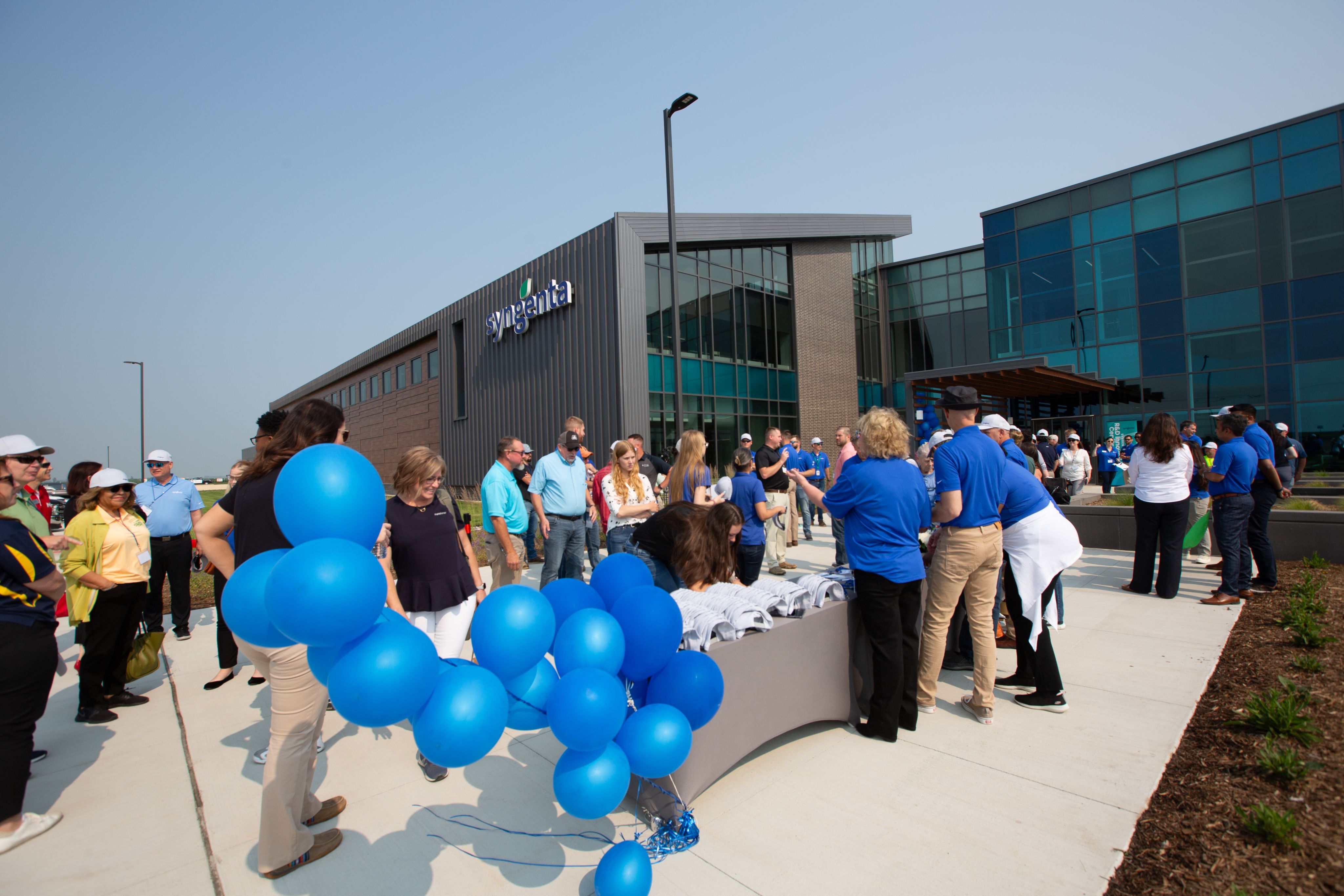
With its gleaming floor-to-ceiling windows and 32,000 square feet of state-of-the-art laboratory space, the new Syngenta Seeds R&D Innovation Center in Malta, Illinois, stands out amid the emerald fields and red barns that surround it. At the same time, the center blends in seamlessly, as its 100,000-square-foot building abuts 88 acres of Syngenta farmland—where each newly developed seed, trait and agronomic practice will be put to the test.
The Innovation Center, strategically located in the heart of the North American corn belt, was specifically designed to foster close collaboration between Syngenta’s research and development teams and the farmers who stand to benefit from their discoveries. As 150 farmers, public officials and other guests gathered to celebrate the center’s grand opening in late June, Syngenta leaders invited them to return—offering farmers what Syngenta executive Warren Kruger described as a permanent “seat at the innovation table.”
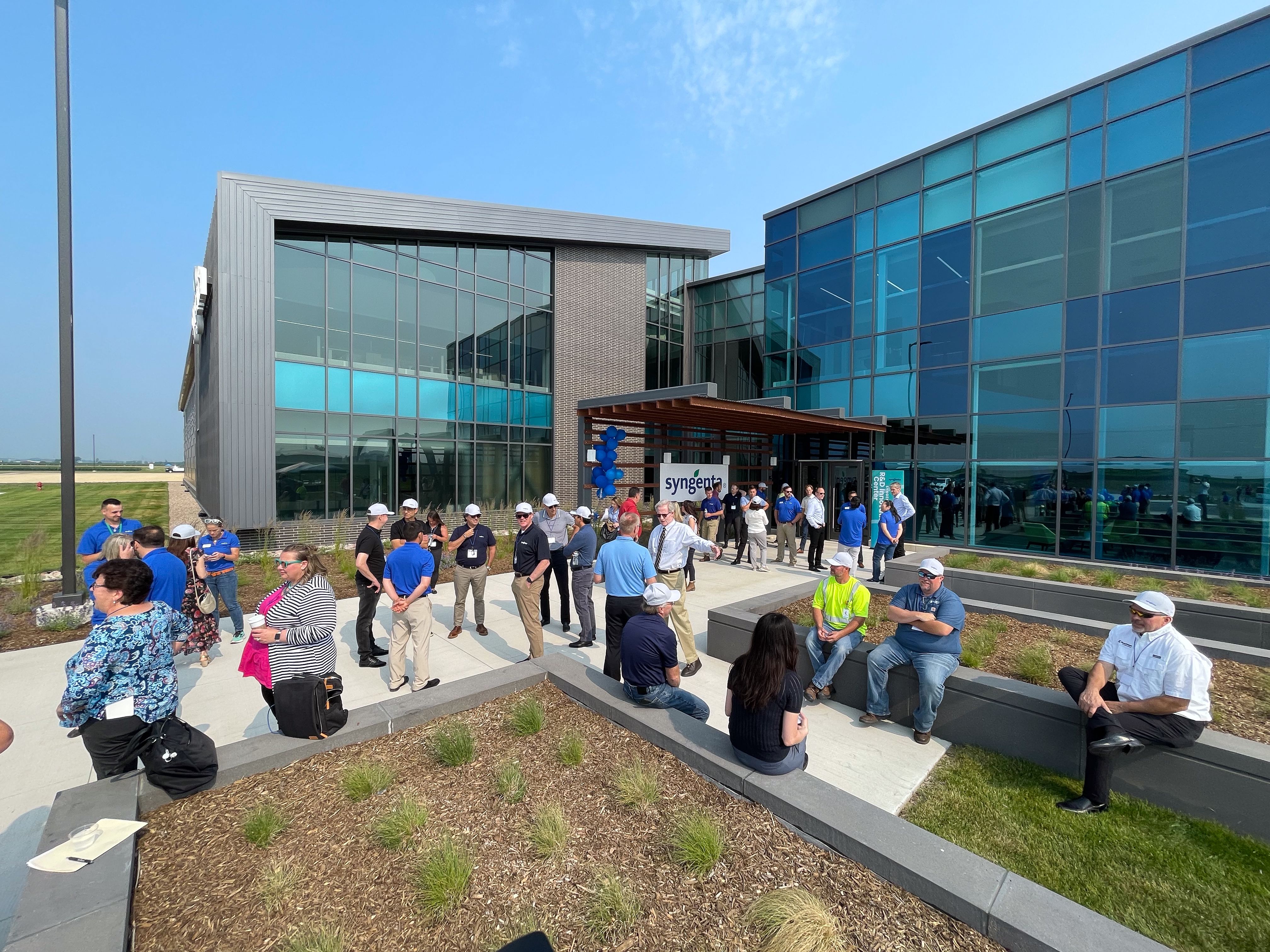
150 farmers, public officials and other guests gathered to celebrate the Innovation Center’s grand opening.
150 farmers, public officials and other guests gathered to celebrate the Innovation Center’s grand opening.
“This Innovation Center is all about partnering with growers—demonstrating to them how we’re thinking, and then listening to their thoughts to make improvements,” said Kruger, head of field crops seeds development for North America. “We want to make sure that farmers—our customers—can touch, feel and see the R&D innovation that we’re doing.
“We know that farmers like to tinker. We like to tinker, too,” Kruger added. “We’re scientists in R&D, but we also like to get our hands in the dirt.”
Cutting-edge research labs
Syngenta Group prides itself on being a research and innovation powerhouse, with some 6,500 employees working in research and development globally and $1.4 billion invested in R&D each year. The Innovation Center in Malta is the newest addition to a constellation of more than 150 Syngenta R&D hubs worldwide. It’s about an hour west of Syngenta Seeds’ global headquarters in Downers Grove, Illinois, allowing for seamless collaboration between research and business teams.
In recent years, Syngenta Seeds has accelerated the time it takes to develop new products by two years and increased its production of pre-commercial hybrids by 40%. The facility in Malta builds on that momentum with labs devoted to genotyping, trait assessment, automation engineering, and virtual and augmented reality.
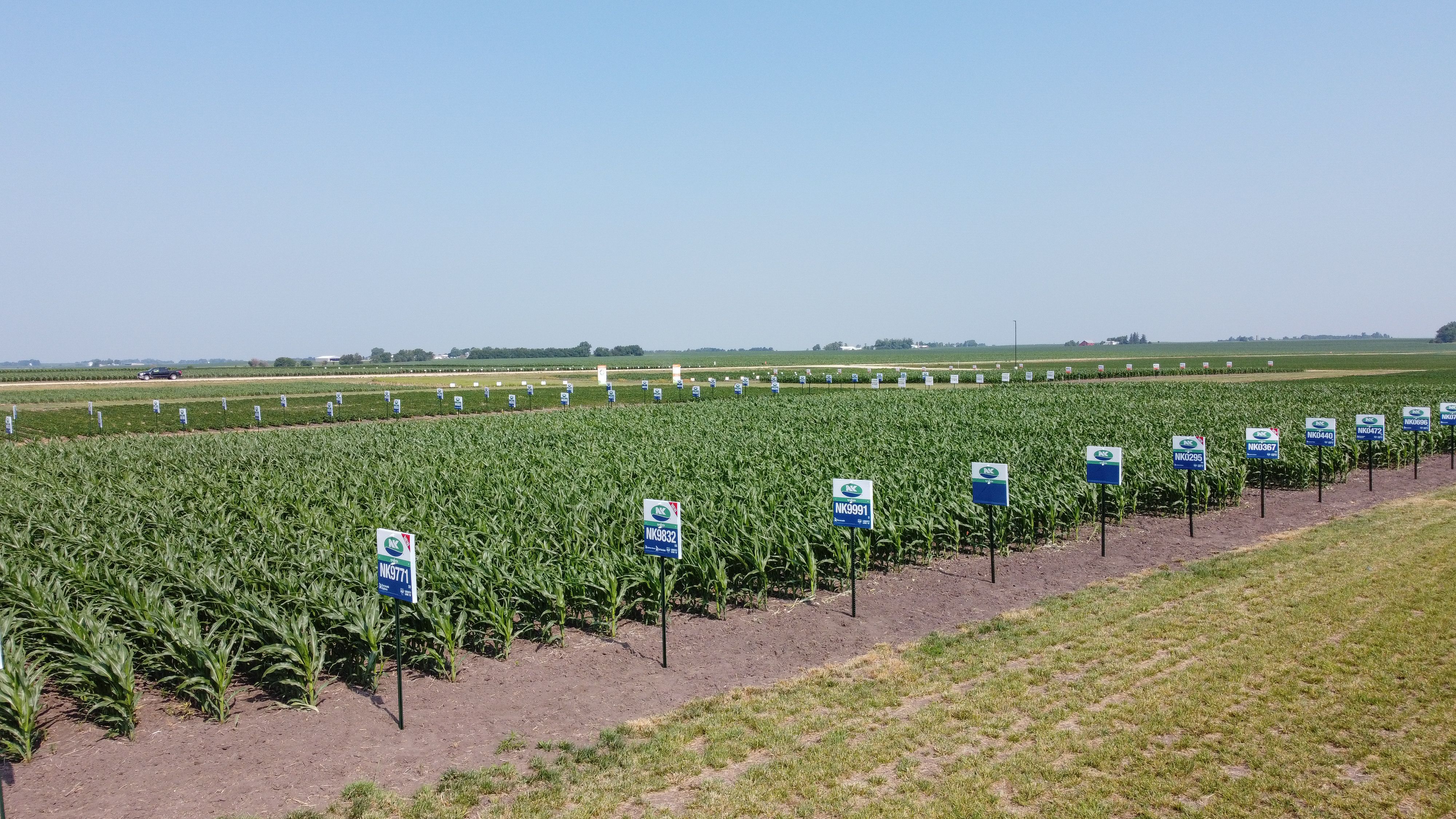
The Innovation Center’s 100,000-square-foot building abuts 88 acres of Syngenta farmland, where each newly developed seed, trait and agronomic practice will be put to the test.
The Innovation Center’s 100,000-square-foot building abuts 88 acres of Syngenta farmland, where each newly developed seed, trait and agronomic practice will be put to the test.
At the Innovation Center’s genotyping lab, researchers use advanced DNA sequencing technology, enabled by robotics, to identify which among a plant’s two billion DNA base pairs might have the potential to drive huge impacts in yields and other desired outcomes.
“We can sequence much faster now, with incredible throughput, with our new lab here in Malta,” said Tim Symanietz, head of North American genotyping for Syngenta Seeds. “We’re also getting information to our breeders, who are located around the globe, much more quickly with the sequencing technology that we're now using—accelerating our breeding program.”
At the Innovation Center’s trait assessment lab, researchers analyze how various characteristics impact plants’ ability to stand up against insect pests and pathogens. This experimentation includes producing 4,000 pounds of “inoculant”—insect eggs, fungi and bacterial matter that’s intentionally deposited in Syngenta glass houses and test fields in Malta and across the Midwest, to see how different plant hybrids and varieties withstand pests and pathogens.
“Your average hippopotamus weighs about 4,000 pounds,” noted Charlie Baxter, who leads trait development and regulatory affairs at Syngenta Seeds. “We're producing a hippopotamus worth of inoculant to go and infect our plants, so we can then go and look at how those plants respond.”
The trait assessment team’s insights help breeders develop new genetically engineered products. They also point breeders toward naturally occurring genetic variations that might make one plant more resistant than another—or better equipped to thrive during punishing weather extremes.
Transforming agriculture through VR and automation
At the Innovation Center’s automation engineering lab, engineers develop new machines and digital solutions that leverage robotics, automation and drones to help Syngenta researchers collect detailed data related to crop trials. The team’s innovations may measure crops’ stalk strength, for example, or yields—supplying researchers with insights about the progress of each trial.
"Data and insights are critical to product development,” said Giru Dhanasekaran, Syngenta Seeds’ head of automation and engineering. “We’re using robotics and automation to allow our R&D scientists to collect large volumes of data much more quickly than they could ever do manually. This dramatically accelerates the product development process.”
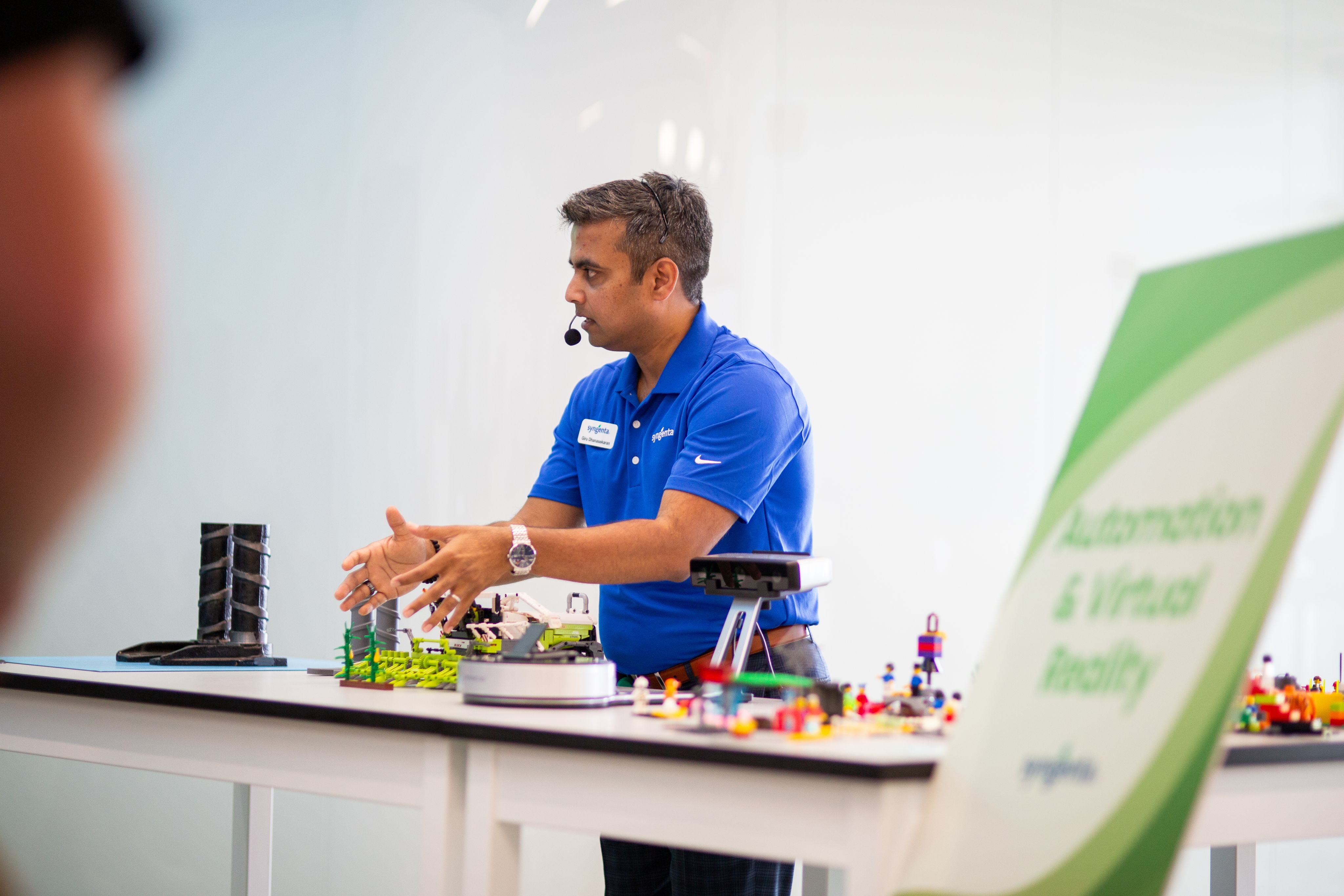
Giru Dhanasekaran, Syngenta Seeds’ head of automation and engineering, explains how robotics and automation are being used to help Syngenta researchers collect detailed data related to crop trials.
Giru Dhanasekaran, Syngenta Seeds’ head of automation and engineering, explains how robotics and automation are being used to help Syngenta researchers collect detailed data related to crop trials.
The Innovation Center’s virtual and augmented reality (VR/AR) lab offers a glimpse into the future. As researchers use data analytics, artificial intelligence (AI) and machine learning models to predict how new products and practices will impact yields and sustainability goals, they’re leveraging VR and AR to visualize how innovations translate into higher yields and healthier soils in different growing conditions.
“VR and AR allow us to intuitively combine many layers of information, so that we can leverage the expertise of users and decision-makers,” said Andy Jakubowski, Syngenta Seeds’ head of analytics and data science.
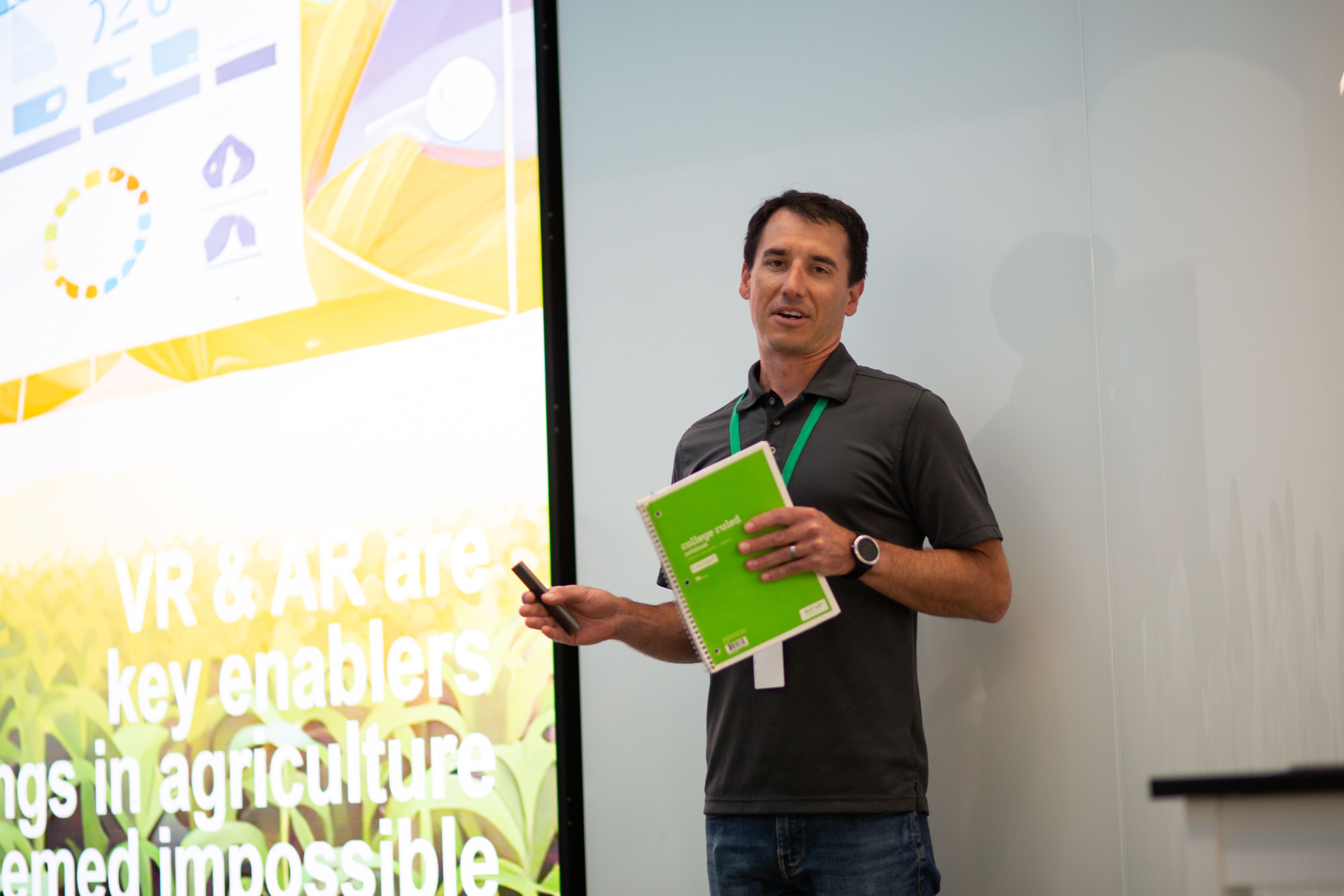
Andy Jakubowski, Syngenta Seeds’ head of analytics and data science, describes how Syngenta draws on virtual and augmented reality (VR/AR) to combine many layers of information—making it easier to leverage the expertise of users and decision makers.
Andy Jakubowski, Syngenta Seeds’ head of analytics and data science, describes how Syngenta draws on virtual and augmented reality (VR/AR) to combine many layers of information—making it easier to leverage the expertise of users and decision makers.
Test and demo fields bring innovations to life
The Syngenta RTP Innovation Center in Research Triangle Park, N.C., remains the company’s largest North American R&D hub. But the Malta facility’s sweeping test fields, and proximity to other Syngenta Seeds test plots throughout the Midwest, take R&D to a new level by allowing researchers to test products and practices at scale.
Syngenta executives said they hoped the farmers, university researchers and others who joined the opening day celebration would return to the Malta site, to give feedback and see first-hand how Syngenta is bringing innovations to life. The Innovation Center’s 12-plot regenerative agriculture demo field, for example, gives farmers a window into practices like no-till farming and cover crops. By nurturing soil health, these practices can enhance environmental sustainability while protecting crops from erosion, droughts and floods.
Abigail Peterson, director of agronomy at the Illinois Soybean Association, said farmers are “bombarded by so much information” about new techniques and products that it can be difficult to figure out which to incorporate. “Hearing about new data and information directly from the people working on it, being able to experience it by seeing the demo fields in person, brings so much more value,” she said.
Pat Dumoulin, whose corn and hog farm is nearby, close to Hampshire, Illinois, said she was keenly aware of the relationship between scientific innovation and on-farm productivity.
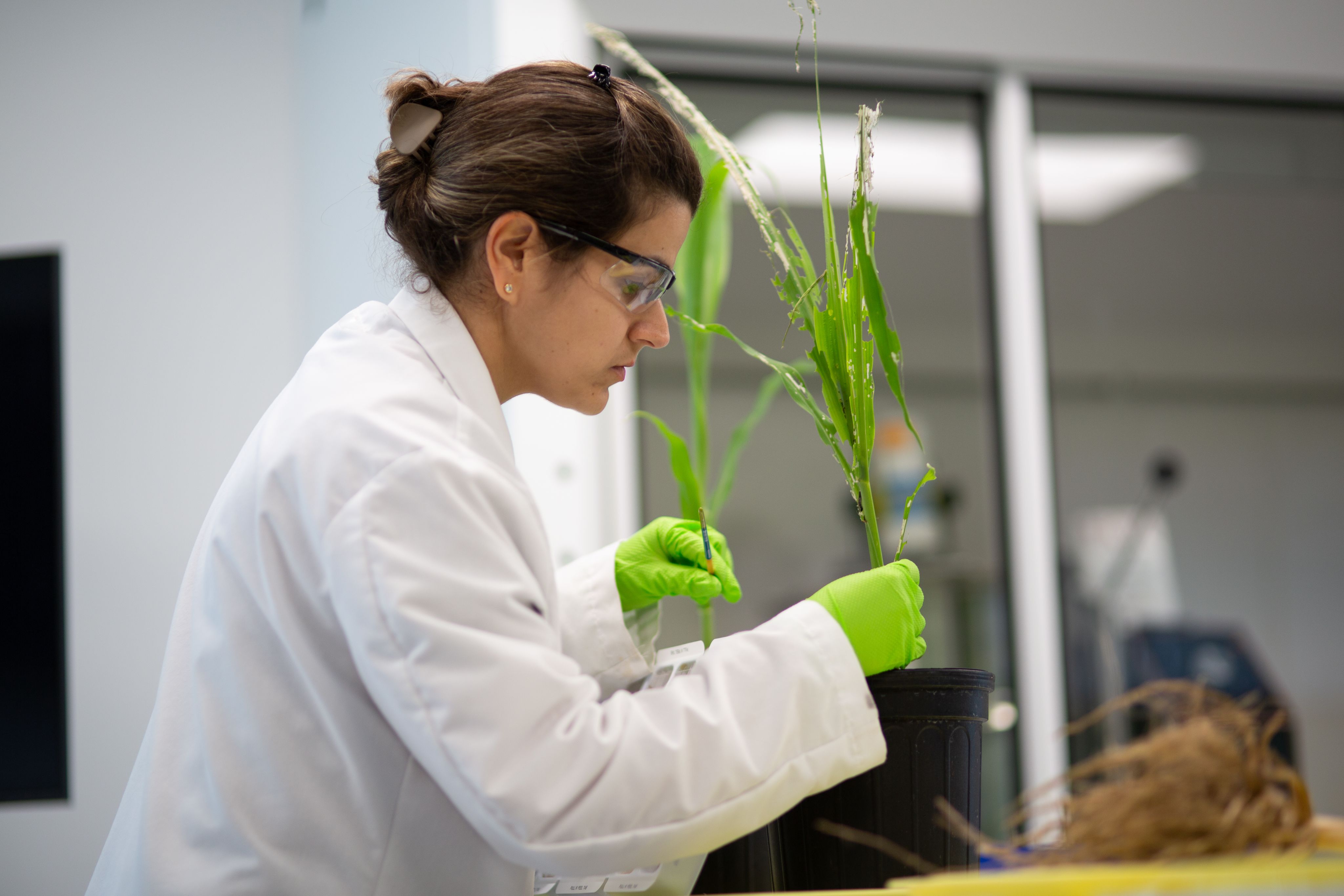
Syngenta researchers analyze how various characteristics affect plants’ ability to withstand insect pests and pathogens.
Syngenta researchers analyze how various characteristics affect plants’ ability to withstand insect pests and pathogens.
“Right now we’re dry, and yet our corn crop looks beautiful,” Dumoulin said. “You can almost hear it grow at night. That's because of the genetics that plant has. The plant that we grow today is 180 degrees different than the plant we grew just 10 years ago.”
Dumoulin added: “I certainly know that I’ll be the beneficiary of what goes on here.”

